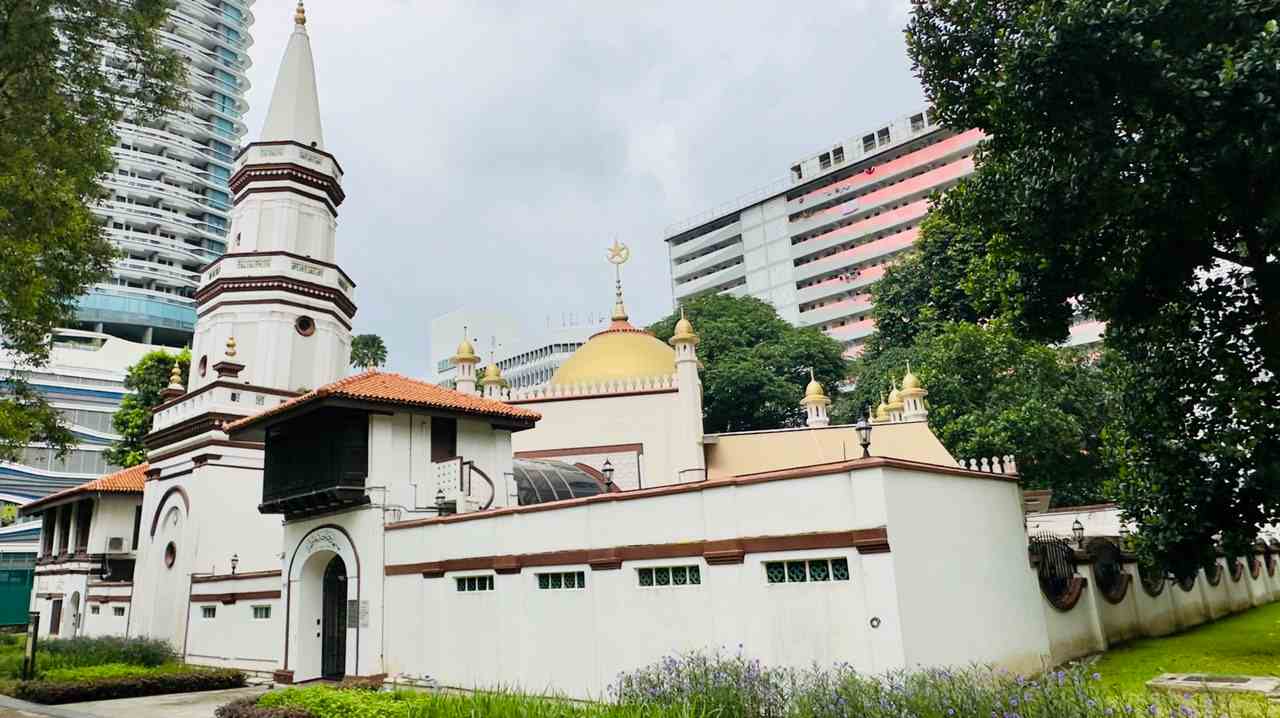National Monuments Of Singapore: Hajjah Fatimah Mosque
What is a National Monument? Who gazettes them? How many national monuments are there in Singapore? To date, the Preservation of Sites and Monuments, a division of National Heritage Board, has identified and gazetted 75 buildings, structures and sites of national significance as an integral part of Singapore’s built heritage.
And we're here to tell you all about them - one National Monument at a time!
You've probably passed by or stepped into more than a few of them without realising they were National Monuments: Al-Abrar Mosque, Asian Civilisations Museum, the Civilian War Memorial, Saint Andrew's Cathedral, the Esplanade Park Memorials, Fort Siloso on Sentosa - no need to plan an itinerary for friends visiting from overseas; just show them this article ✌️
In this edition, we spotlight the first local mosque to be named after a woman, Hajjah Fatimah Mosque.
📍 Location
Hajjah Fatimah Mosque was the 7th building to be gazetted as a National Monument. Located near other National Monuments such as Sultan Mosque and Istana Kampong Gelam, the nearest MRT station nearest to Hajjah Fatimah Mosque is Nicoll Highway.
📅 Significant dates
Date built:
- 1845-1846: Hajjah Fatimah Mosque was constructed along Beach Road
Milestones:
- 1930s: The main prayer hall was rebuilt
- 1970s: The mosque underwent extensive renovations and repair works
Date gazetted: 28 Jun 1973
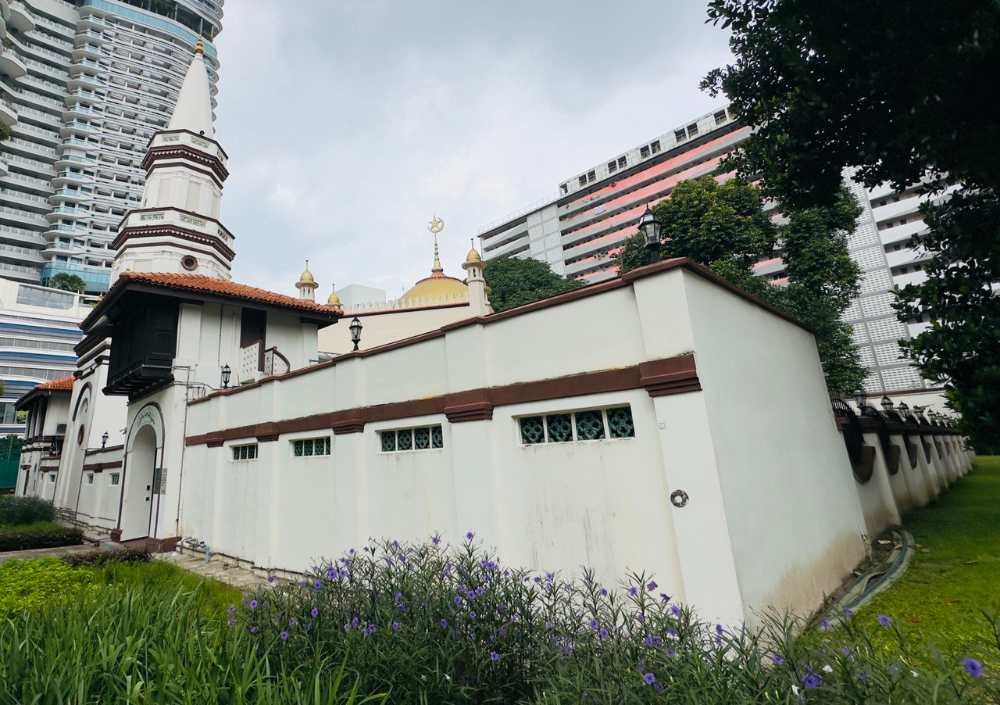 IMAGE: NG KAI
IMAGE: NG KAI
📜 History
Once known as Java Road Mosque after the adjacent road that has since been removed, Hajjah Fatimah Mosque was commissioned in 1845 by its namesake, Hajjah Fatimah Binte Sulaiman. It is believed that Hajjah Fatimah was a wealthy businesswoman who married a Bugis prince-merchant from Celebes (today’s Sulawesi, Indonesia).
Hajjah is an honorific title given to a Muslim woman who has completed the hajj (pilgrimage) to Mecca. Following her husband’s death, the young widow continued to manage the business with great success and amassed a considerable fortune.
Before the mosque was built, Hajjah Fatimah's family residence occupied the site. Burglars broke into her home twice, and it was even set ablaze on the second occasion. Fortunately, Hajjah Fatimah was away during both burglaries and was unscathed. When she returned, she attributed her good fortune and providential escape to Allah. As a form of thanksgiving, she erected a mosque on the present site and rebuilt her house nearby.
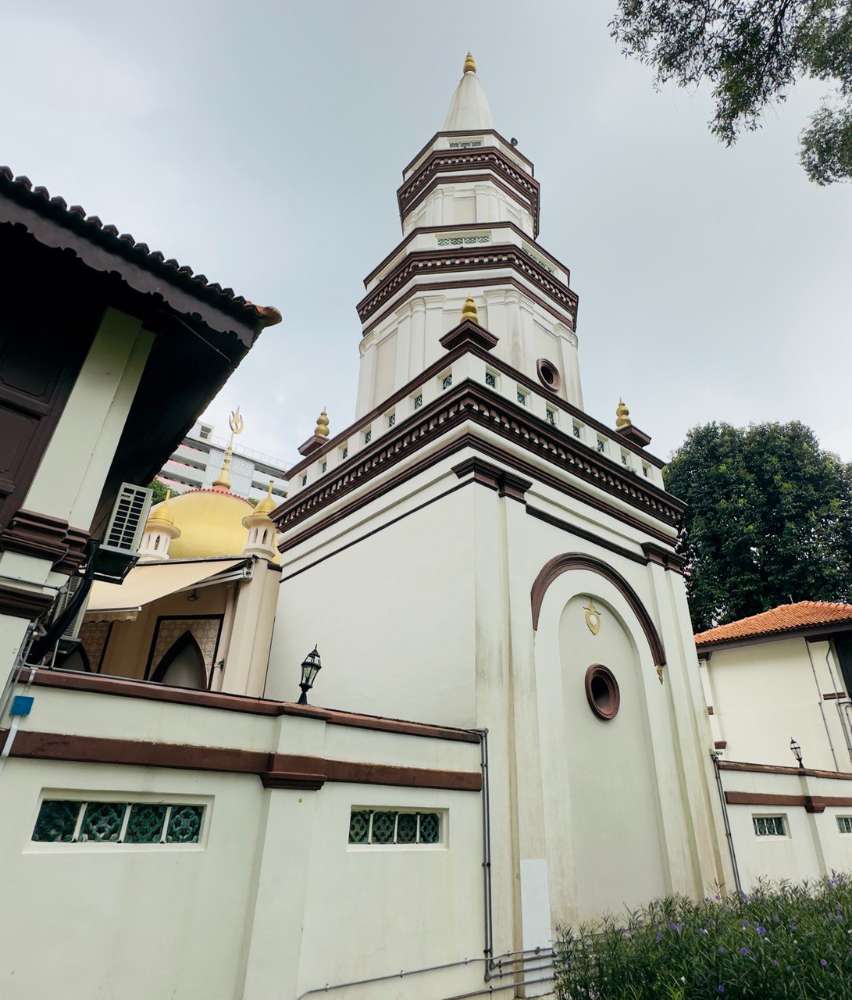 IMAGE: NG KAI
IMAGE: NG KAI
In the past, the mosque stood next to the sea; this explains why the road in front of it is called Beach Road. The mosque used to serve the Muslim communities living in the surrounding kampongs, including Malays, Bugis, and Arabs. They were primarily labourers and merchants, and had worked for the growth and development of Singapore as a British trading port.
Today, the mosque is managed by the Islamic Religious Council of Singapore (Majlis Ugama Islam Singapura, MUIS).
For her philanthropy and role in establishing the mosque that bears her name, Hajjah Fatimah was inducted into the Singapore Women's Hall of Fame in 2014, the Hall of Fame's inaugural year. She had previously been honoured in a nine-member Wall of Fame which then evolved into the larger Hall of Fame.
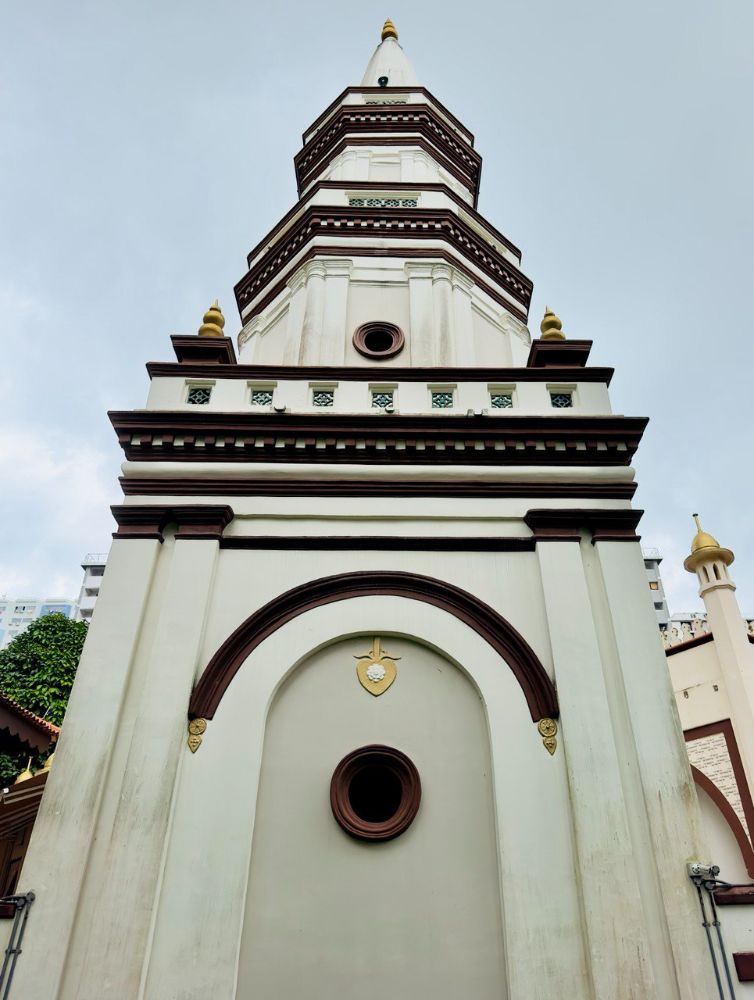 IMAGE: NG KAI
IMAGE: NG KAI
📐 Design and architecture
Hajjah Fatimah Mosque combines both Indo-Islamic and European features in its architecture. Its most distinct feature is certainly the minaret (a slender tower, typically part of a mosque), which resembles the Neoclassical steeple of the first Saint Andrew’s Church.
The four-level minaret tilts at an angle of about six degrees, which led to it being called “Singapore’s leaning tower”. The tilt is caused by moisture seepage and shifting of the handmade bricks that were used in the construction of the tower.
The mosque's earliest sections, including the steeple-minaret, are believed to have been constructed under the purview of Governor Surveyor John T. Thomson, although there are no sources to confirm this.
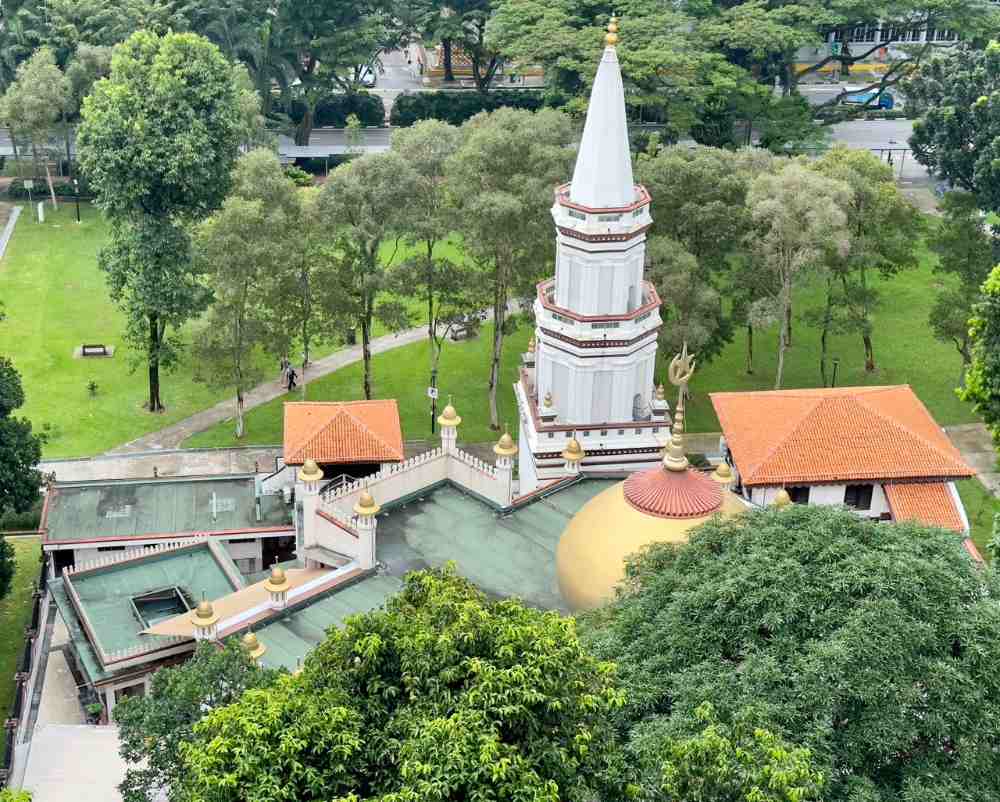 IMAGE: NG KAI
IMAGE: NG KAI
A huge golden ogee-shaped (onion-shaped) dome crowns the main prayer hall. Twelve openings covered with yellow and green glass panels were installed at the dome’s circular base in groups of three at each cardinal point. The roof perimeters are lined with merlon (solid upright section of a structure) cresting that is broken by miniature cupolas (rounded domes forming or adorning a roof or ceiling) at regular intervals.
Aligned to the qibla (the direction of the Kabba, the sacred building at Mecca, to which Muslims turn at prayer), the main prayer hall is skewed to an angle on the lot. A section of it was rebuilt circa 1930 following the designs of the architects from the local firm Chung & Wong. Malay artisans and craftsmen were engaged to work on the project.
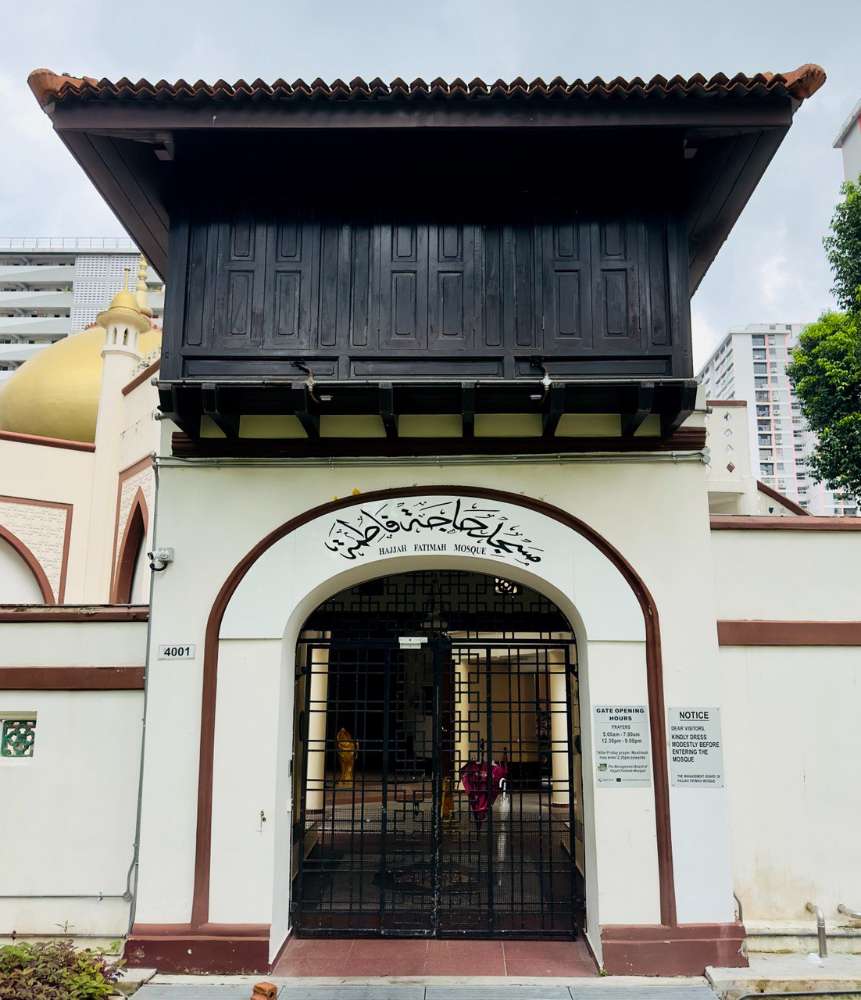 IMAGE: NG KAI
IMAGE: NG KAI
Numerous lancet-shaped windows, which are typical of Neo-Gothic architecture, can be found around the mosque, ensuring that the interior is well ventilated. Enclosed verandahs surround the prayer hall on three sides.
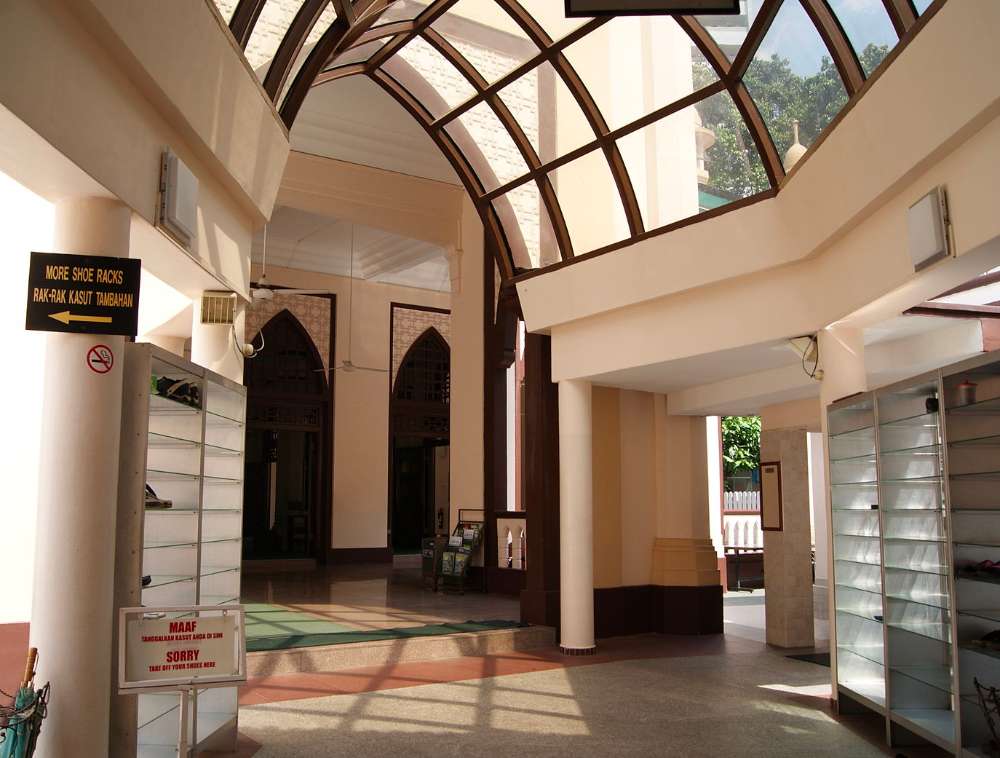 IMAGE: WIKIMEDIA COMMONS/@JACKLEE
IMAGE: WIKIMEDIA COMMONS/@JACKLEE
The mosque's mausoleum stands directly behind the mihrab (which indicates the orientation to Mecca, towards which Muslims would pray). It contains three tombs in traditional Islamic style, which hold the remains of Hajjah Fatimah; her daughter, Raja Siti; and her son-in-law, Syed Ahmed Alsagoff. A small cemetery outside the mausoleum is reserved for the burial needs of Hajjah Fatimah’s family members.
🕖 Opening hours
Regular visiting hours are daily from 5am-7am, and 12.30pm-9pm.
🎟️ Admission
Entry is free.
For the latest updates on Wonderwall.sg, be sure to follow us on TikTok, Telegram, Instagram, and Facebook. If you have a story idea for us, email us at [email protected].







